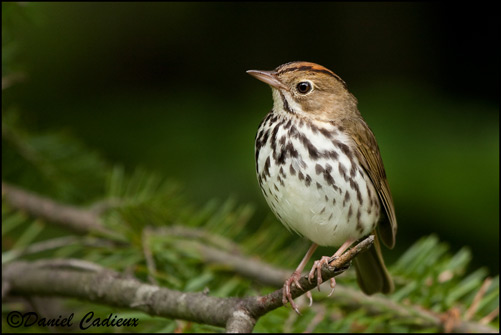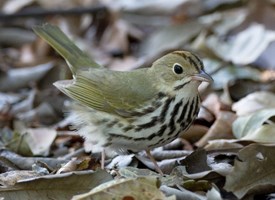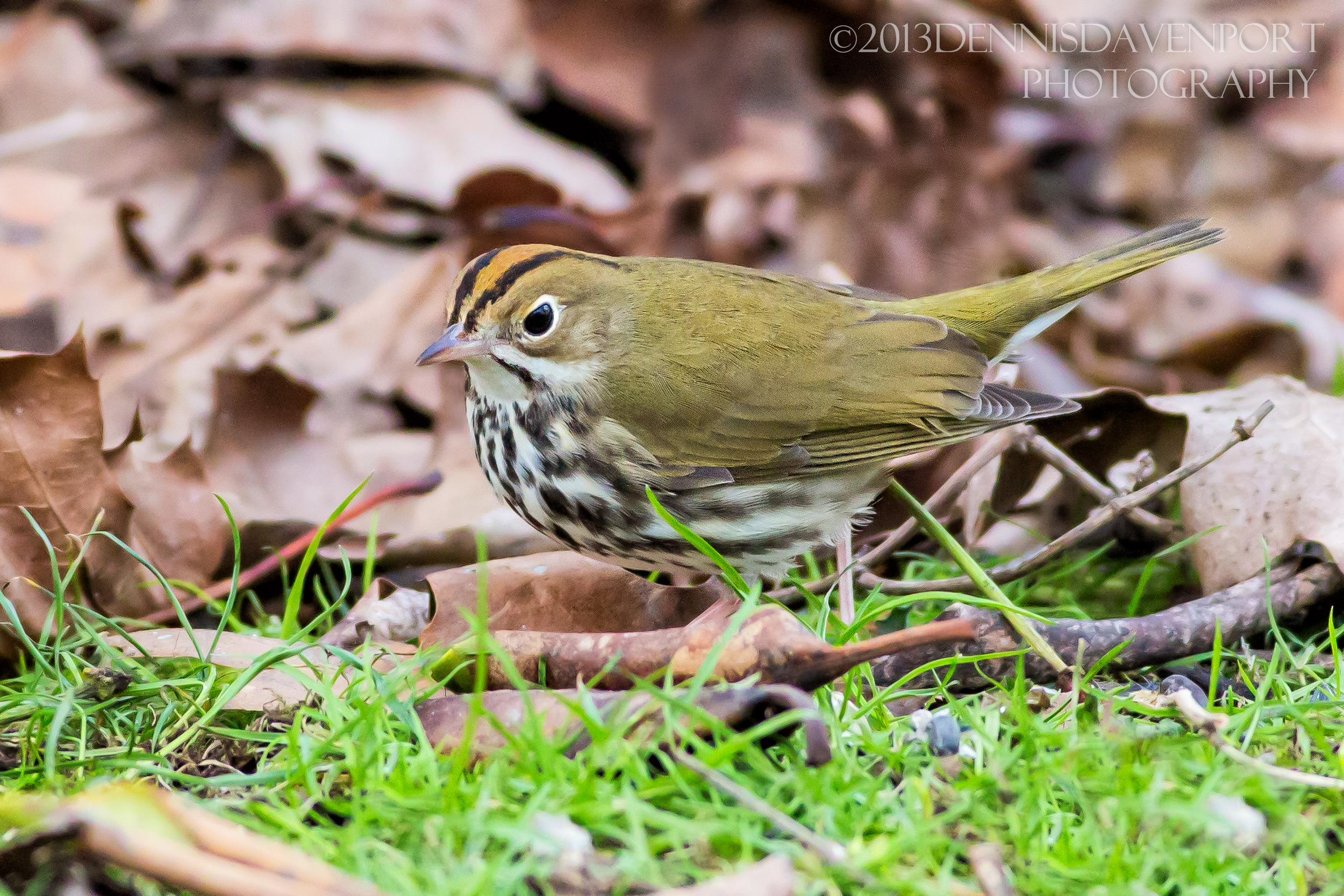
Seiurus aurocapillus
SUBFAMILY
Parulinae
TAXONOMY
Seiurus aurocapillus Linnaeus, 1766, at sea off Haiti. Two subspecies.
OTHER COMMON NAMES
English: Teacherbird; French: Paruline couronnйe; German:
Pieperwaldsдnger; Spanish: Reinita Hornera.
PHYSICAL CHARACTERISTICS
5.5–6.5 in (14–16.5 cm). Brownish upperparts, two black
stripes on crown of head with a rusty orange patch between.
White throat with brown stripes. Underparts are white with
mottled-brown breast, somewhat similar in appearance to a
wood thrush.
DISTRIBUTION
Breeds in the northern half of the United States from the eastern
coast through the Midwest and into Montana, and well
into Canada from the Atlantic Ocean to Alberta.
HABITAT
Mixed and deciduous woods lacking dense bushy undergrowth.
BEHAVIOR
Instead of flitting from tree to tree in characteristic warbler
fashion, it runs about the fallen leaves and tosses them aside in
its search for hidden arthropods. It responds to the presence of
an intruder, particularly when the latter is near the nest, by flying
up, uttering “tick” calls or even by erecting the orangecolored
feathers of its crown patch. It also sometimes mimics
an injured bird to draw away the intruder. Its song is one of
the best-known North American bird songs, and consists of a
sequence of “teach-er, teach-er teach-er,” which gets progressively
louder. The popular name “teacherbird” derives from
the song, which is delivered from the ground or from low to
fairly high-placed branches.
FEEDING ECOLOGY AND DIET
Mainly arthropods, earthworms, and snails.
REPRODUCTIVE BIOLOGY
Courtship involves in-flight singing, posturing, and pursuit by
the males. The ovenbird makes its nests on the ground, using
grass and stems topped with leaves for the roof, and grass and
hair for the interior lining. The nest resembles a Dutch oven,
and is responsible for the bird’s common name. Typically lay
three to six speckled eggs, which hatch about two weeks later.
CONSERVATION STATUS
Not threatened. Their nests, however, are becoming more vulnerable
to predators that prefer fragmented habitat, which is
becoming more plentiful in their breeding grounds.
SIGNIFICANCE TO HUMANS
Particularly valued for their songs—they are seldom seen but
frequently heard.
Other popular Animals
Photo Gallery of - Ovenbird




 Animalia Life
Animalia Life